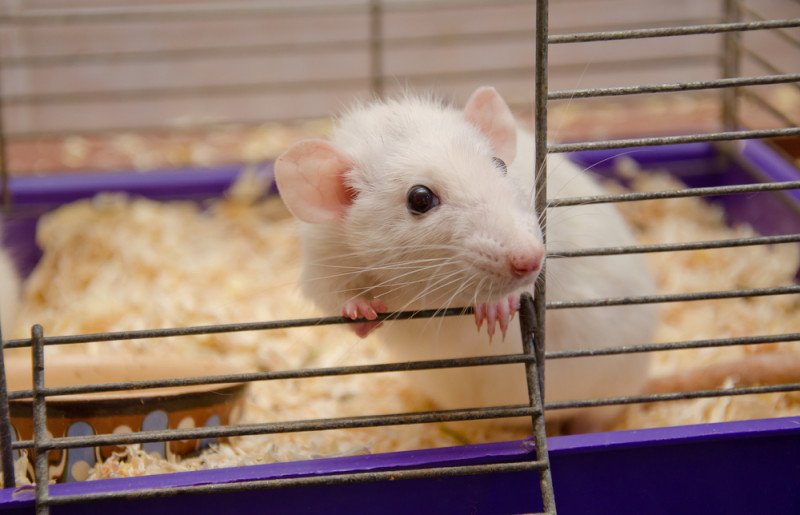MicroRNAs Improve Behavior, Motor Function in Rett Mouse Model

Kirill Kurashov/Shutterstock
The use of microRNA molecules that targeted a protein receptor important for nerve cell growth led to improved behaviors and motor function in a Rett syndrome mouse model, a study shows.
These molecules were carried by tiny vesicles called exosomes, which were derived from human urinary stem cells.
The findings support further development of this strategy to improve brain function and movement in people with Rett, the researchers said.
Their study, “Human urine-derived stem cell-derived exosomal miR-21-5p promotes neurogenesis to attenuate Rett syndrome via the EPha4/TEK axis,” was published in the journal Laboratory Investigation.
Rett syndrome is primarily caused by mutations in the MECP2 gene that affect the brain and result in cognitive, sensory, emotional, and motor disturbances, as well as difficulties with breathing, the heart, and digestion.
The encoded MeCP2 protein is known to regulate genes that play a critical role in brain development and function. In particular, MeCP2 regulates the expression (production) of microRNAs (miRNAs), which are short segments of RNA that modulate protein production and are essential in the growth of nerve cells (neurons).
Exosomes are small vesicles secreted by cells that transport proteins, fats, RNA, and miRNAs to influence the function of other cells. Studies suggest exosomes derived from urinary stem cells — or urine-derived stem cells (USCs) — that carry miRNAs can induce nerve cell growth and recovery from brain injury.
A miRNA called miR-21-5p targets the Eph receptor A4 (EphA4) function, which is known to regulate nerve cell growth.
In this study, a Rett mouse model was used to test the impact of USC exosomes (USC-Exos) that carry miR-21-5p on the Eph receptor in the nervous system. The experiments were conducted by researchers at the Second Hospital of Jilin University in China.
USCs were first isolated from fresh human urine, then exosomes were extracted and grown along with neural stem cells — cells that transform (differentiate) into neurons — isolated from the embryos of normal mice as well as those with a mutation causing Rett-like disease.
After incubation, the USC-Exos were internalized into neural stem cells and promoted the differentiation of Rett stem cells to neurons compared to cells not treated with these exosomes.
Next, the team confirmed that, relative to normal cells, EPha4 expression in the Rett group was increased. After incubating the Rett group cells with USC-Exos, the expression decreased and again, promoted differentiation, which “indicated that USC-Exos-induced differentiation of [Rett neural stem cells] might be partially due to the inhibition of EPha4,” the team wrote.
The investigators then added miR-21-5p to USC-Exos and confirmed the expression of miR-21-5p and the blockage of EPha4 in Rett neural stem cells. Moreover, USC-Exos with miR-21-5p also promoted neuronal stem cell differentiation.
“Thus, miR-21-5p targeting EPha4 through exosome transfer was one of the mechanisms that promote neurogenesis [transformation into neurons],” the researchers added.
Based on the success of these experiments, they investigated the role of the exosomes in the Rett mouse model. USC-Exos were injected into mice and entered the brain. Compared to controls, increased expression of miR-21-5p along with reduced expression of EPha4 was confirmed.
Finally, the behavioral and motor function ability of Rett and control mice treated with exosomes containing miR-21-5p was assessed.
In untreated Rett mice, the ability to store food was notably reduced compared to control mice. When treated with USC-Exos, this ability was enhanced in Rett mice. With the addition of a molecule that blocked the action of miR-21-5p, the food storage ability of treated Rett mice was reduced. No difference was found in nesting ability between treated and untreated mice.
Compared to controls, the grabbing force was lower in untreated Rett mice but improved with exosomes administration. The miR-21-5p blocker suppressed this improvement. Performance on the balance beam test was unaffected by treatment.
The Morris water maze experiment was used, in which mice were placed in a large circular pool of water and escape from the water onto a hidden platform.
The time for Rett mice to find the platform was increased over controls, whereas the time was shortened in Rett mice treated with exosomes. Adding the miR-21-5p blocker increased time compared to treated mice. The spatial search capacity of all mice was unaffected by treatment.
“Thus, the behavior, motor coordination, and cognitive function of [Rett] mice were notably reduced, and treatment with human USC-derived exosomal miR-21-5p could improve these behaviors,” the scientists wrote.
“In conclusion, this study shows that exosomal miR-21-5p from USCs promotes early neurogenesis by regulating EphA4,” and highlighted a “potential USC-derived exosomes-based treatment for [Rett],” they added.






